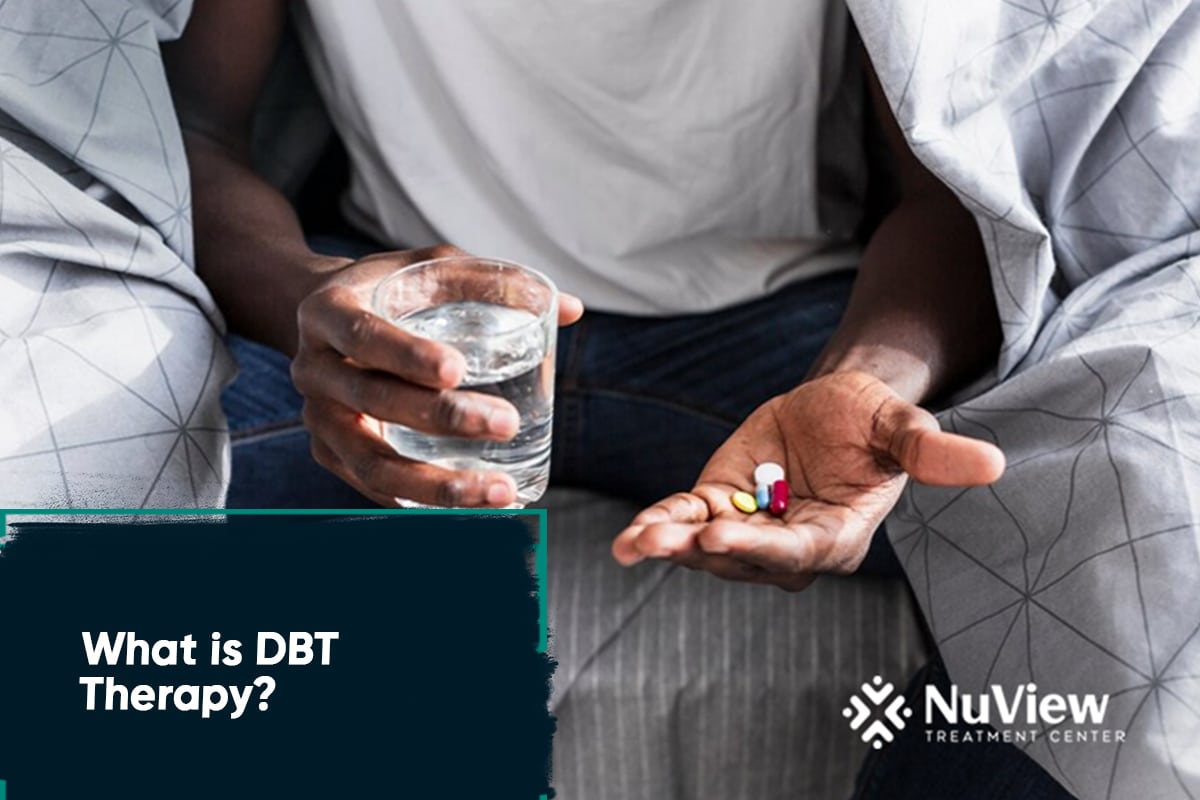DBT Therapy: How it Works and Benefits
Dialectical Behavior Therapy (DBT) is an evidence-based psychotherapeutic method developed by Dr. Marsha Linehan in the late 1980s.
Initially designed for individuals with borderline personality disorder and high risks of self-harm or suicide, DBT has since been adapted for various other mental health disorders, including depression, anxiety, and post-traumatic stress disorder (PTSD).
A study in the American Journal of Psychiatry revealed that DBT significantly reduces suicidal behaviors and leads to fewer hospitalizations. A randomized controlled trial published in JAMA Psychiatry found that patients undergoing DBT showed higher treatment completion rates than those receiving other cognitive-behavioral treatments.
DBT combines cognitive-behavioral and mindfulness strategies, enhancing patients’ emotional regulation, interpersonal effectiveness, and distress tolerance. With its strong empirical backing, DBT has been recognized for its effectiveness in treating complex mental health issues.
What is DBT Therapy?
Dialectical Behavior Therapy (DBT) is a cognitive-behavioral approach initially developed to treat chronically suicidal individuals diagnosed with borderline personality disorder (BPD).
Over time, it has been adapted to treat a range of mental health disorders. What distinguishes DBT from other therapies is its emphasis on dialectical strategies, blending change and acceptance to bring about positive therapeutic outcomes.

How does DBT Therapy Work?
DBT operates on the principle of balancing acceptance and change. Through a combination of individual therapy, group skills training, and phone coaching, patients learn skills to regulate emotions, cope with distress without resorting to self-harm, and improve interpersonal relationships.
DBT therapists participate in consultation team meetings to support each other in their therapeutic endeavors.
What is the Science Behind DBT?
DBT is scientifically grounded in behaviorist and cognitive therapies combined with Eastern mindfulness practices.
The integration of mindfulness establishes a foundation for patients to regulate emotions better, reduce impulsivity, and focus on the present moment.
Numerous studies have shown the efficacy of DBT, especially its capacity to reduce suicidal behaviors, hospitalizations, and treatment dropouts in patients with complex disorders.
What are the Eight Phases of DBT Therapy?
DBT therapy unfolds through a pre-treatment phase and four main stages: Behavioral stabilization, Dysfunctional coping, Building a life worth living, and Completion and moving forward.
Each stage is uniquely designed to address different behaviors based on their severity. Specifically, therapists work with clients to address:
- Life-threatening behaviors: This encompasses behaviors potentially leading to the client’s death, including suicide communications, suicidal ideation, and all types of suicidal and non-suicidal self-injury.
- Therapy-interfering behaviors: These might impede the client’s active participation in therapy, such as missing sessions or being under the influence during them.
- Quality of life behaviors: This category focuses on behaviors that detract from the client’s overall life quality, be it issues in relationships, work, school, or emotional regulation.
- Skills acquisition: Here, the therapist introduces new methods and techniques to empower the client in better managing their emotions and behaviors.
Delving deeper into the stages:
- Behavioral stabilization: This stage addresses the gravest and most self-destructive behaviors.
- Dysfunctional coping: The emphasis shifts to behaviors obstructing the client’s ability to deal with stress and regulate emotions effectively.
- Building a life worth living: The third stage revolves around aiding the client in crafting a life marked by fulfillment and meaning.
- Completion and moving forward: The concluding stage involves a thorough review of progress, consolidation of the knowledge gained, and preparation for future challenges.
The pace at which a client progresses through these stages is individualized, and the objectives are tailored to each stage’s intent.

Unsure Which Medication is Right for You? Our Experts Can Guide You.
What are the Types of DBT Therapy?
DBT Therapy integrates diverse formats like Individual Therapy, Group Skills Training, Phone Coaching, Therapist Consultation Team Meetings, and Adaptations for Adolescents and IOP. A closer examination of these types reveals:
- Individual Therapy: One-on-one sessions tailored to target specific behavioral and emotional challenges.
- Group Skills Training: Regular group sessions emphasizing the development of life skills.
- Phone Coaching: Offers in-the-moment coaching to navigate challenging situations.
- Therapist Consultation Team Meetings: Ensures therapists are competent and motivated by providing a supportive environment.
- Adaptations for Adolescents and IOP: Modified approaches to cater to the unique needs of adolescents and those requiring more intensive care.
What Conditions does DBT Therapy Treat?
DBT Therapy has proven effective for disorders like Borderline Personality Disorder (BPD), Eating Disorders, Substance Use Disorder, Bipolar Disorder, ADHD, and Behavioral Issues in Adolescents. Diving deeper:
- Borderline Personality Disorder (BPD): The initial and core application of DBT.
- Eating Disorders: Aiding individuals to build a healthier relationship with food.
- Substance Use Disorder: Assists in managing cravings and preventing relapse.
- Bipolar Disorder and ADHD: Provides tools to manage mood swings and focus challenges, respectively.
- Behavioral Issues in Adolescents: Addresses typical adolescent struggles like self-harm, suicidal ideation, and conflicts.

What are the Benefits of DBT Therapy?
DBT Therapy imparts multiple benefits, including enhanced emotional regulation, decreased self-harming behaviors, improved interpersonal relationships, resilience, and bolstered self-worth. Delving into these advantages:
- Enhanced Emotional Regulation: Equip individuals to manage intense emotions without resorting to destructive behaviors.
- Decreased Self-harming Behaviors: Direct strategies to reduce tendencies like self-harm or suicidal ideation.
- Improved Interpersonal Relationships: Tools and techniques to nurture healthier relationships.
- Resilience: Strengthening the individual’s ability to bounce back from setbacks.
- Bolstered Self-worth: Encouraging a positive self-view and confidence in one’s abilities.
How Effective is DBT for Trauma and PTSD?
DBT has shown efficacy in addressing trauma and PTSD, with studies indicating its value in processing traumatic memories and reducing avoidance behaviors.
For instance, a study published in the Journal of Clinical Psychology found that trauma patients undergoing DBT reported significant symptom reduction and increased quality of life.
Can DBT be Used for Anxiety, Depression, and Other Conditions?
Yes, DBT is effectively used to treat various conditions, including anxiety and depression. Its principles, like emotional regulation and mindfulness, are versatile and address mental and physical symptoms, making it a complementary approach alongside other therapies like CBT.
Questions About Treatment Options for Substance Use Disorder?
Our admission specialists are available 24/7 to listen to your story and get you started with next steps.
What to Expect During a DBT Session?
During a DBT session, therapists combine cognitive-behavioral techniques with mindfulness strategies to address clients’ maladaptive behaviors.
Participants can expect to engage in open dialogues about their challenges, partake in practical exercises, and set goals for their growth. The session typically involves reviewing the past week, practicing newly acquired skills, and planning for future challenges.
How Long does a Typical DBT Session Last?
A DBT session generally lasts between 60 to 90 minutes, with the length tailored to the individual’s needs and the session’s objectives.
While many clients feel a sense of accomplishment after a session, others might need additional time for reflection.
The frequency of sessions varies by individual, with some opting for weekly meetings and others benefiting from more frequent interactions.
Are There Any Side Effects or Risks Associated With DBT?
While DBT is widely considered safe, participants might occasionally experience heightened self-awareness or emotional sensitivity after sessions.
These reactions are part of the therapeutic process as individuals confront their challenges. Nonetheless, DBT may not resonate with everyone, particularly those wary of intensive self-exploration or group dynamics.

Who is a Suitable Candidate for DBT Therapy?
DBT is ideal for individuals grappling with intense emotional fluctuations, self-harming tendencies, or challenges in interpersonal relationships.
Though DBT stands strong on its own, therapists commonly integrate it with other therapeutic modalities for a comprehensive approach. The therapy is customized, focusing on individual challenges and the person’s commitment to change.
Is DBT Suitable for Young Adults?
Yes, DBT is tailored and effective for young adults, addressing their specific challenges and life stages.
Therapists might use age-appropriate examples or activities for those on the younger spectrum. The active involvement of parents or guardians is crucial for adolescents, ensuring understanding and continuous support throughout the therapeutic journey.
Questions About Treatment Options for Substance Addiction?
Our admission specialists are available 24/7 to listen to your story and get you started with next steps.
How to Find a Certified DBT Therapist?
To find a certified DBT therapist, consider platforms such as the DBT®-Linehan Board of Certification, DBT Self Help, and Behavioral Tech Institute. These directories allow you to search by location, certification level, and other specific criteria:
- DBT®-Linehan Board of Certification: Search for certified clinicians on their website based on your preferences.
- DBT Self Help: A comprehensive list of DBT providers organized by state or country.
- Behavioral Tech Institute: While not certifying therapists, they offer a directory to locate DBT professionals by region.
- Psychology Today: Customize your therapist search to pinpoint DBT providers and filter by insurance, gender, etc.
- DBT PE: Access a directory of DBT therapists and refine your search by certification level and other factors.
It’s crucial to select a therapist with whom you resonate and trust. Recommendations from medical professionals, acquaintances, or those familiar with therapy can also be beneficial.
What Qualifications Should a DBT Therapist Have?
A DBT therapist should possess formal training in Dialectical Behavior Therapy and hands-on clinical experience.
Acquiring certification from the Linehan Board of Certification (the primary certifying body for DBT) reflects a therapist’s proficiency in DBT. Verifying that the therapist holds a valid license in their practice is essential.
A competent DBT therapist should be adept in facilitating individual therapy, skills group training, and crisis coaching, a hallmark of the DBT approach. Seeking client feedback and reviews can provide insight into the therapist’s effectiveness and style.
Comparing DBT With Other Therapeutic Approaches
While DBT emphasizes balancing acceptance and change, other therapeutic approaches cater to various mental health aspects with distinct methodologies.
DBT, unlike some therapies, introduces a skills-training component that equips patients with practical tools to handle challenging situations.
While traditional therapies may focus on insight and understanding, DBT prioritizes building skills and coping strategies for immediate relief and long-term resilience.
How does DBT Differ From CBT or Exposure Therapy?
DBT focuses on equipping patients with skills like distress tolerance and emotional regulation, whereas CBT identifies and changes distorted thinking patterns, and exposure therapy confronts traumatic triggers.
On the other hand, exposure therapy helps people confront and reduce the fear associated with traumatic triggers, while DBT focuses on balancing acceptance and change through its emphasis on dialectics.
Frequently Asked Questions
How many sessions of DBT are typically required for noticeable results?
The number of sessions required for noticeable results in DBT can vary, but many individuals start experiencing improvements after several weeks of consistent therapy.
Yes, DBT can be conducted virtually or online, allowing patients to access therapy remotely, which is especially beneficial during situations like the current global pandemic.
No, while DBT was originally developed for individuals with Borderline Personality Disorder (BPD), it has since been adapted for other conditions like depression, anxiety, and eating disorders.
A standard DBT program typically lasts around 6 months to a year, but the duration can vary based on individual needs and the severity of their condition.
Yes, there are several self-help resources and books on DBT. One widely recognized book is “The Dialectical Behavior Therapy Skills Workbook” by Matthew McKay, Jeffrey C. Wood, and Jeffrey Brantley.
Stay on Track With Your Recovery. Let Us Monitor and Support You

About the Contributor
Author, NuView Treatment Center
I went to medical school at The George Washington University School of Medicine in Washington, D.C.





